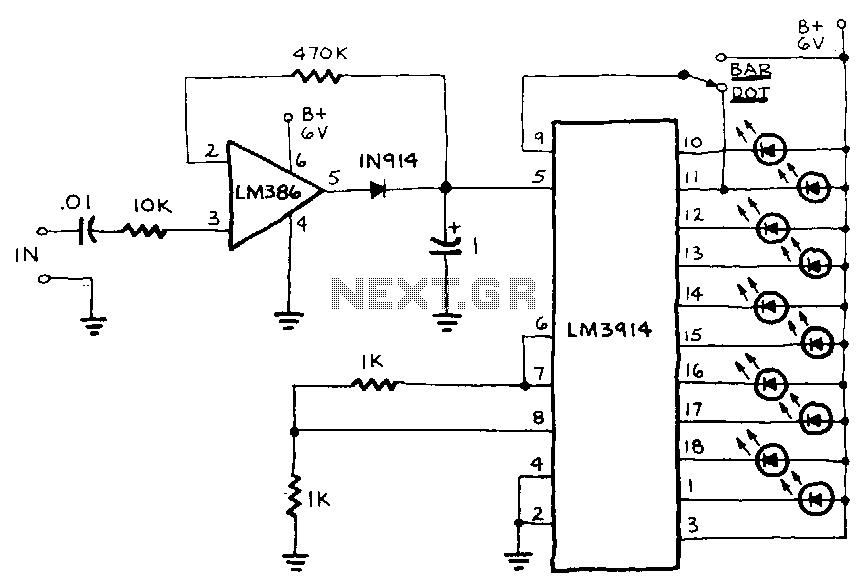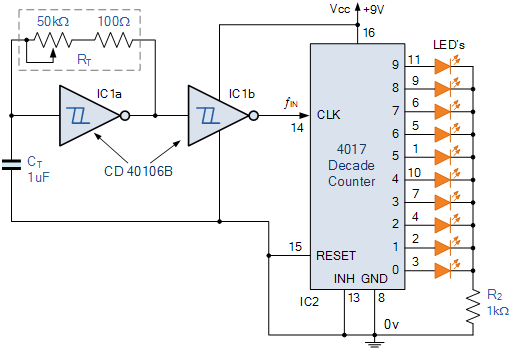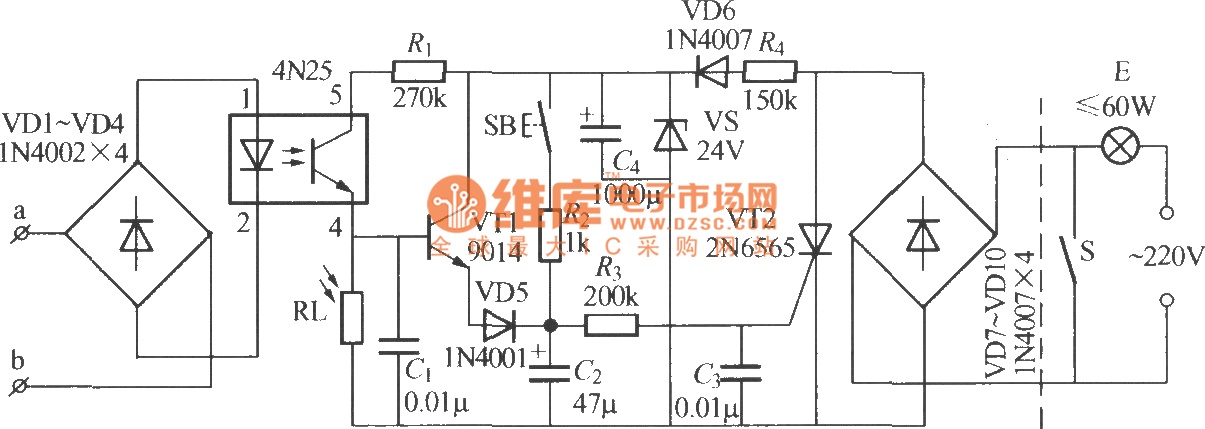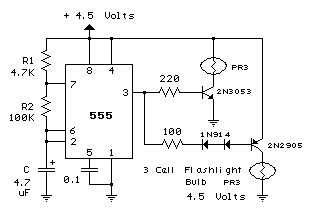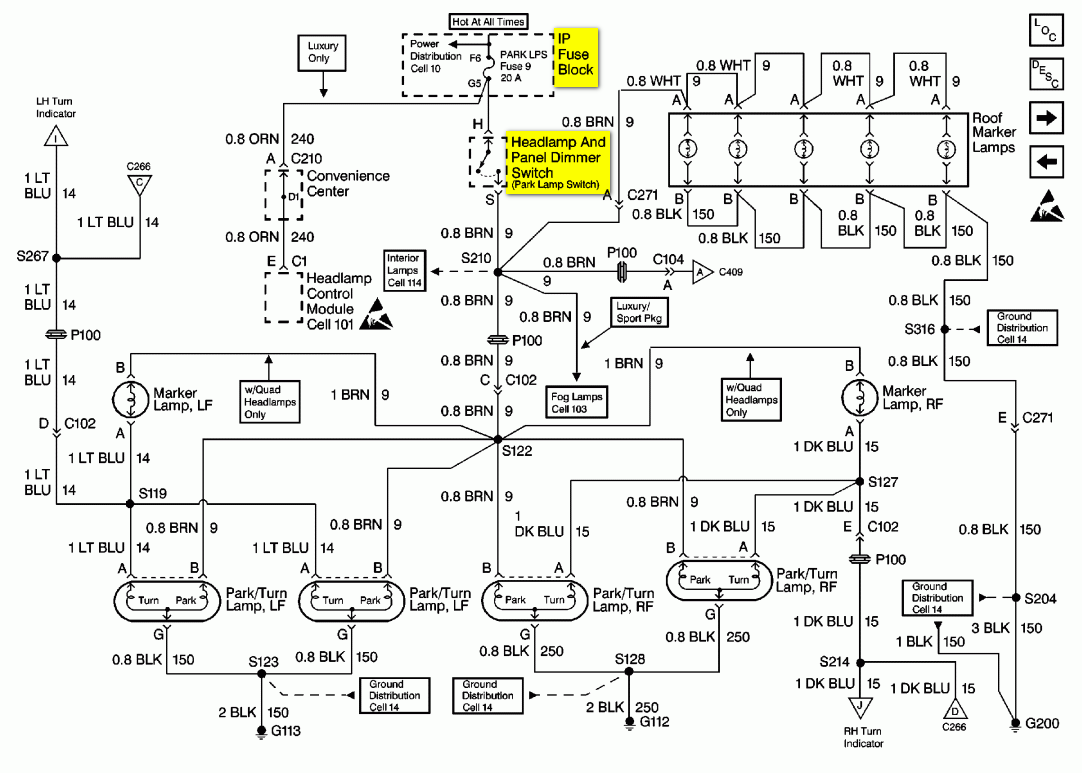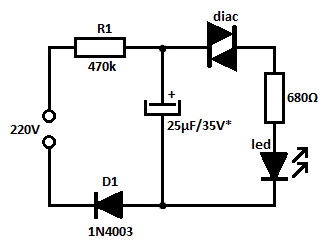
220 V LED Night light
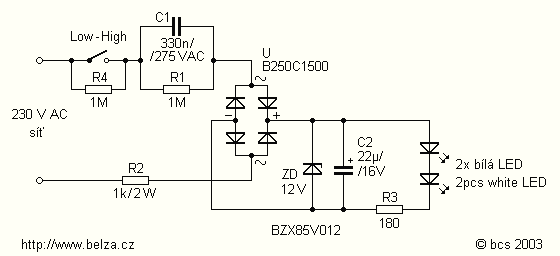
This is a capacitor power supply. This is a very small current of energy-effective because it has very little loss, much smaller than the miniature transformer. Capacitor impedance is inversely proportional to frequency. This is a great disadvantage when the grid appears in the short interference pulses caused by switching on large appliances with inductive load character. For such a limiting pulse, capacitor (C1 here) is practically a short circuit and load through a short period of much higher current. LEDs are very sensitive to glitches and can be easily damaged or destroyed directly. Current pulses can damage LEDs rated at significantly less power, and small streams can cause them to shine from a stream. Especially white LEDs will be damaged very easily. Therefore, the circuit is completed by the Zener diode and resistors R2 and R3. Resistor R2 limits the maximum pulse current to 300 mA. The Zener diode reduces the interference pulse voltage to 12 V, and resistor R3 ensures that the LED current will not exceed 40 mA, allowing the LED to operate for a short period without lasting damage. When connected correctly, the circuit components should work on the first connection. If there is uncertainty in the connection, the circuit can be tested at low voltage. The regulated power should be connected to the Zener diode in accordance with the polarity of the electrolytic capacitor. Voltage should be slowly increased. When the voltage reaches about 6 V, the LEDs should light up. At around 11 V, current consumption should be about 30 mA. As the voltage approaches 12 to 13 V, current consumption will increase sharply as current begins to pass through the Zener diode. The voltage should be increased to a current of 100-200 mA, taking care to avoid prolonged current through the Zener diode, which could cause damage. The source should then be connected to the rectifier at the terminals marked with a tilde. The device should behave similarly, with all voltages about 1 V greater. Connecting the power rectifier with the opposite polarity should yield similar results. It is crucial to ensure that capacitor C1 is not shorted. The resistance at the outlets should be measured in parallel with resistor R1. If everything is correct, the fitting casing cover can be placed, and the switch should be turned to open before plugging the device into an AC outlet. The LED should light up with low brightness, and when the switch is closed, it should shine at full brightness. Caution should be exercised while the device is electrically connected to the network, as the author is not responsible for any electric shock.
It is highly recommended to use the original capacitor rated for DC-200 or 250 V, with an AC peak value of about 230 V and 320 V. When using a capacitor with a DC voltage indication, it should be rated for 400 V or more. A capacitor rated for 250 V or even 200 V may be overloaded and could eventually fail. The current through the LEDs when the switch is closed is about 18 mA, allowing the LEDs to emit sufficient light for reading. When the switch is open, the current decreases to only a few hundred microamperes, resulting in a light intensity that corresponds to the brightness of a few tubes.
The circuit design incorporates a capacitor (C1) for energy storage, which is essential for smoothing out voltage fluctuations. The Zener diode serves a dual purpose: it protects the LEDs from high voltage spikes and regulates the voltage to a safe level. The resistors (R2 and R3) are critical for current limiting, ensuring that the LEDs operate within their safe current ratings. Overall, this capacitor power supply circuit is designed for efficiency and reliability, with careful consideration of component ratings and operational limits to prevent damage to sensitive components like LEDs.This Is a capacitor power supply. This is a very small currents of energy-effective, because it has very little loss, much smaller than the miniature transformer. Capacitor impedance is inversely proportional to frequency. This is a great disadvantage when the grid appear in the short interference pulses caused by switching on large appliances with inductive load character.
For such a limiting pulse capacitor (C1 here) is practically a short circuit and load through a short period of much higher current. LEDs are the glitches very sensitive and easily damaged or destroyed directly. Current pulses damaged LED is rated at significantly less power and small streams are starting to shine from a stream. Oshin especially white LEDs will be damaged very easily. Therefore, the circuit is completed by the Zener diode and resistors R2 and R3. Resistor R2 limited to a maximum pulse current of 300 mA. Zener diode for reducing interference pulse voltage of 12 V and resistor R3 ensures that the LED current will not flow more than 40 mA, LED after a short period of time without lasting damage.
When connected correctly, the circuit components should work on first connection. If you're not sure you're getting involved in correctly, try the following parts of the circuit at low voltage. First connect the regulated power to the Zener diode in accordance with the polarity of the electrolytic capacitor.
Slowly zoom voltage. When voltage is about 6 V would be to light up the LEDs. When voltage is about 11 V should be a current consumption of about 30mA. When voltage is about 12 to 13 in the current consumption should increase sharply, because the current will pass through the zener diode. Tension just zoom into the current 100-200 mA. Do not worry about big long zener diode current, could be destroyed. Then connect the source to the rectifier to the terminals marked with a tilde. The device should behave the same, only all voltages will be about 1 V greater. Connect the power rectifier with the opposite polarity. The circuit should work as well as in the previous case. Finally, still make sure that no shunt capacitor C1. At the outlets you have just measured the resistance parallel connected resistor R1. If everything is right, fitting casing cover, turn the switch so as to open and plug the device into an AC outlet.
LED should light up with little brightness. When the switch is closed should be lit to the fullest. The facility is in operation electrically connected to the network, keep working so caution should be exercised. Author not responsible for any shock. Highly recommend using the original capacitor, which is DC-200 or 250 V AC peak value is about 230 V and 320 V when using a capacitor with an indication of DC voltage should be 400 or more voltage 630 V Capacitor 250 V or even 200 V voltage is overloaded and can eventually break through.
The switch is current through the LEDs is about 18 mA LED light issue so that it can be close to lights and read. By opening the switch is procházající current only a few hundred microamperes and light intensity corresponds to shine more tubes.
🔗 External reference
It is highly recommended to use the original capacitor rated for DC-200 or 250 V, with an AC peak value of about 230 V and 320 V. When using a capacitor with a DC voltage indication, it should be rated for 400 V or more. A capacitor rated for 250 V or even 200 V may be overloaded and could eventually fail. The current through the LEDs when the switch is closed is about 18 mA, allowing the LEDs to emit sufficient light for reading. When the switch is open, the current decreases to only a few hundred microamperes, resulting in a light intensity that corresponds to the brightness of a few tubes.
The circuit design incorporates a capacitor (C1) for energy storage, which is essential for smoothing out voltage fluctuations. The Zener diode serves a dual purpose: it protects the LEDs from high voltage spikes and regulates the voltage to a safe level. The resistors (R2 and R3) are critical for current limiting, ensuring that the LEDs operate within their safe current ratings. Overall, this capacitor power supply circuit is designed for efficiency and reliability, with careful consideration of component ratings and operational limits to prevent damage to sensitive components like LEDs.This Is a capacitor power supply. This is a very small currents of energy-effective, because it has very little loss, much smaller than the miniature transformer. Capacitor impedance is inversely proportional to frequency. This is a great disadvantage when the grid appear in the short interference pulses caused by switching on large appliances with inductive load character.
For such a limiting pulse capacitor (C1 here) is practically a short circuit and load through a short period of much higher current. LEDs are the glitches very sensitive and easily damaged or destroyed directly. Current pulses damaged LED is rated at significantly less power and small streams are starting to shine from a stream. Oshin especially white LEDs will be damaged very easily. Therefore, the circuit is completed by the Zener diode and resistors R2 and R3. Resistor R2 limited to a maximum pulse current of 300 mA. Zener diode for reducing interference pulse voltage of 12 V and resistor R3 ensures that the LED current will not flow more than 40 mA, LED after a short period of time without lasting damage.
When connected correctly, the circuit components should work on first connection. If you're not sure you're getting involved in correctly, try the following parts of the circuit at low voltage. First connect the regulated power to the Zener diode in accordance with the polarity of the electrolytic capacitor.
Slowly zoom voltage. When voltage is about 6 V would be to light up the LEDs. When voltage is about 11 V should be a current consumption of about 30mA. When voltage is about 12 to 13 in the current consumption should increase sharply, because the current will pass through the zener diode. Tension just zoom into the current 100-200 mA. Do not worry about big long zener diode current, could be destroyed. Then connect the source to the rectifier to the terminals marked with a tilde. The device should behave the same, only all voltages will be about 1 V greater. Connect the power rectifier with the opposite polarity. The circuit should work as well as in the previous case. Finally, still make sure that no shunt capacitor C1. At the outlets you have just measured the resistance parallel connected resistor R1. If everything is right, fitting casing cover, turn the switch so as to open and plug the device into an AC outlet.
LED should light up with little brightness. When the switch is closed should be lit to the fullest. The facility is in operation electrically connected to the network, keep working so caution should be exercised. Author not responsible for any shock. Highly recommend using the original capacitor, which is DC-200 or 250 V AC peak value is about 230 V and 320 V when using a capacitor with an indication of DC voltage should be 400 or more voltage 630 V Capacitor 250 V or even 200 V voltage is overloaded and can eventually break through.
The switch is current through the LEDs is about 18 mA LED light issue so that it can be close to lights and read. By opening the switch is procházající current only a few hundred microamperes and light intensity corresponds to shine more tubes.
🔗 External reference
